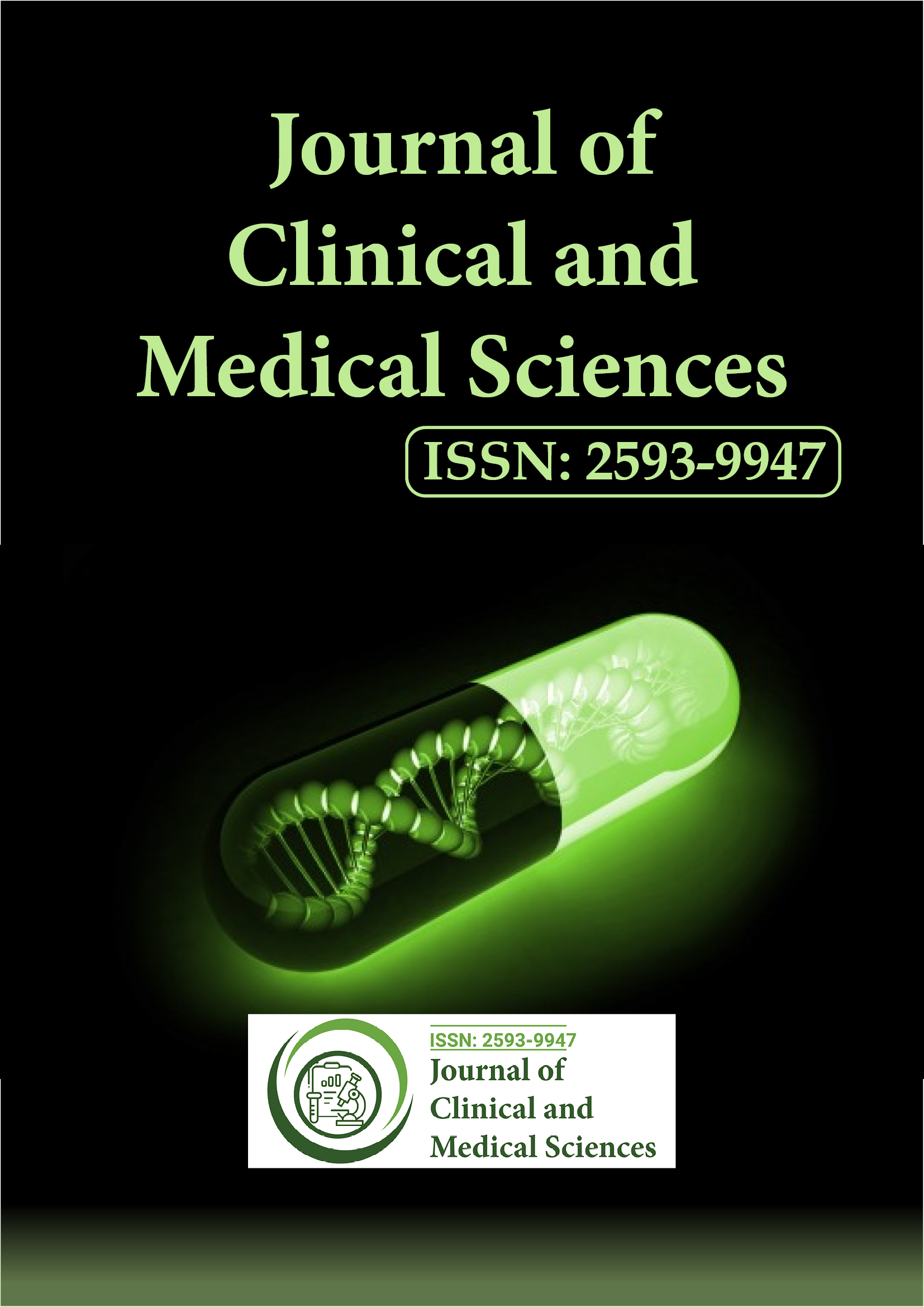Indexed In
- Euro Pub
- Google Scholar
Useful Links
Share This Page
Journal Flyer

Open Access Journals
- Agri and Aquaculture
- Biochemistry
- Bioinformatics & Systems Biology
- Business & Management
- Chemistry
- Clinical Sciences
- Engineering
- Food & Nutrition
- General Science
- Genetics & Molecular Biology
- Immunology & Microbiology
- Medical Sciences
- Neuroscience & Psychology
- Nursing & Health Care
- Pharmaceutical Sciences
Opinion Article - (2024) Volume 8, Issue 3
Revolutionizing Medicine with Advances in Imaging and Artificial Intelligence
Ryoya Oka*Received: 27-Aug-2024, Manuscript No. JCMS-24-27490; Editor assigned: 30-Aug-2024, Pre QC No. .JCMS-24-27490 (PQ); Reviewed: 13-Sep-2024, QC No. JCMS-24-27490; Revised: 20-Sep-2024, Manuscript No. JCMS-24-27490 (R); Published: 27-Sep-2024, DOI: 10.35248/2593-9947.24.8.291
Description
Imaging technologies have revolutionized the field of medicine, transforming diagnostic capabilities and enhancing clinical outcomes. The journey from the early days of X-ray to the modern-day use of Artificial Intelligence (AI) in medical imaging represents a remarkable evolution in how physicians view and understand the human body. This progression has not only improved diagnostic accuracy but has also initiated the process for less invasive procedures, faster treatments and better overall patient care.
The history of medical imaging began with the discovery of X-rays by Wilhelm Conrad Roentgen in 1895. This creative discovery allowed physicians to visualize the internal structures of the body for the first time without surgery. Early X-ray machines were bulky and the quality of images was limited, but the technology provided critical insights into fractures, bone diseases and other skeletal issues. The ability to peer inside the body gave rise to the development of radiology as a specialized field, with X-ray becoming a staple in hospitals worldwide.
Despite the early successes of X-ray imaging, its limitations became apparent. The technology could only produce two-dimensional images and was not capable of capturing soft tissues in detail. To overcome these limitations, other imaging techniques were developed. The 1970s saw the advent of Computed Tomography (CT) scans, which allowed for cross-sectional imaging of the body. CT scans combined X-ray technology with computer processing to create detailed, 3D images of the body's internal structures. This breakthrough revolutionized the diagnosis of conditions like tumors, strokes and internal injuries, providing more accurate and detailed information than traditional X-rays.
Meanwhile, another major development in imaging technology occurred with the introduction of Magnetic Resonance Imaging (MRI) in the early 1980s. Unlike X-rays and CT scans, MRI uses strong magnetic fields and radio waves to generate detailed images of the body's internal structures, particularly soft tissues such as the brain, muscles and organs. MRI is especially valuable in neurological, musculoskeletal and cardiovascular imaging due to its ability to produce high-resolution, non-invasive images without the use of ionizing radiation. The ability to capture soft tissue details made MRI a powerful diagnostic tool in a variety of medical specialties.
In the years that followed, other innovations further expanded the capabilities of medical imaging. Ultrasound, for example, gained widespread use in obstetrics and cardiology. Unlike X-rays and CT scans, ultrasound imaging relies on sound waves to create images and is considered safe for use in pregnancy. The non-invasive nature of ultrasound, combined with its real-time imaging capabilities, made it indispensable in monitoring fetal development and guiding minimally invasive procedures.
Despite these advancements, medical imaging technologies continued to face challenges in terms of image quality, interpretation and speed. The need for greater precision and faster processing led to the integration of Artificial Intelligence (AI) into medical imaging in recent years. AI, particularly machine learning algorithms, has begun to play a transformative role in analyzing medical images with remarkable speed and accuracy. AI systems can assist radiologists by automating the process of image interpretation, helping to identify abnormalities such as tumors, fractures, or organ malformations that might be overlooked by the human eye.
For instance, AI-driven software can now analyze medical images for early signs of diseases like cancer, heart disease and neurological disorders, providing valuable insights that allow for earlier detection and intervention. One of the key benefits of AI in medical imaging is its ability to learn from immense datasets of images, continuously improving its accuracy and diagnostic capabilities. This reduces the likelihood of human error, expedites diagnoses and helps healthcare providers make more informed treatment decisions.
Moreover, AI is enabling the development of imaging systems that can generate higher-quality images in less time, improving workflow efficiency in hospitals and clinics. The integration of AI with imaging systems has also led to innovations such as 3D imaging and augmented reality, which enhance the precision of surgical planning and procedures. Surgeons can now view 3D models of organs or tumors before performing complex operations, allowing for more accurate and less invasive surgeries.
As AI continues to evolve, its role in medical imaging is expected to grow even more significant. Future advancements could include the development of imaging technologies that integrate real-time data from various sources, such as wearable devices, to offer a more comprehensive view of a patient’s health. The combination of AI, advanced imaging technologies and personalized medicine has the potential to drive more precise and individualized treatment plans, improving patient outcomes and reducing healthcare costs.
Citation: Oka R (2024). Revolutionizing Medicine with Advances in Imaging and Artificial Intelligence. J Clin Med Sci. 8:291.
Copyright: © 2024 Oka R. This is an open access article distributed under the terms of the Creative Commons Attribution License, which permits unrestricted use, distribution, and reproduction in any medium, provided the original author and source are credited.
